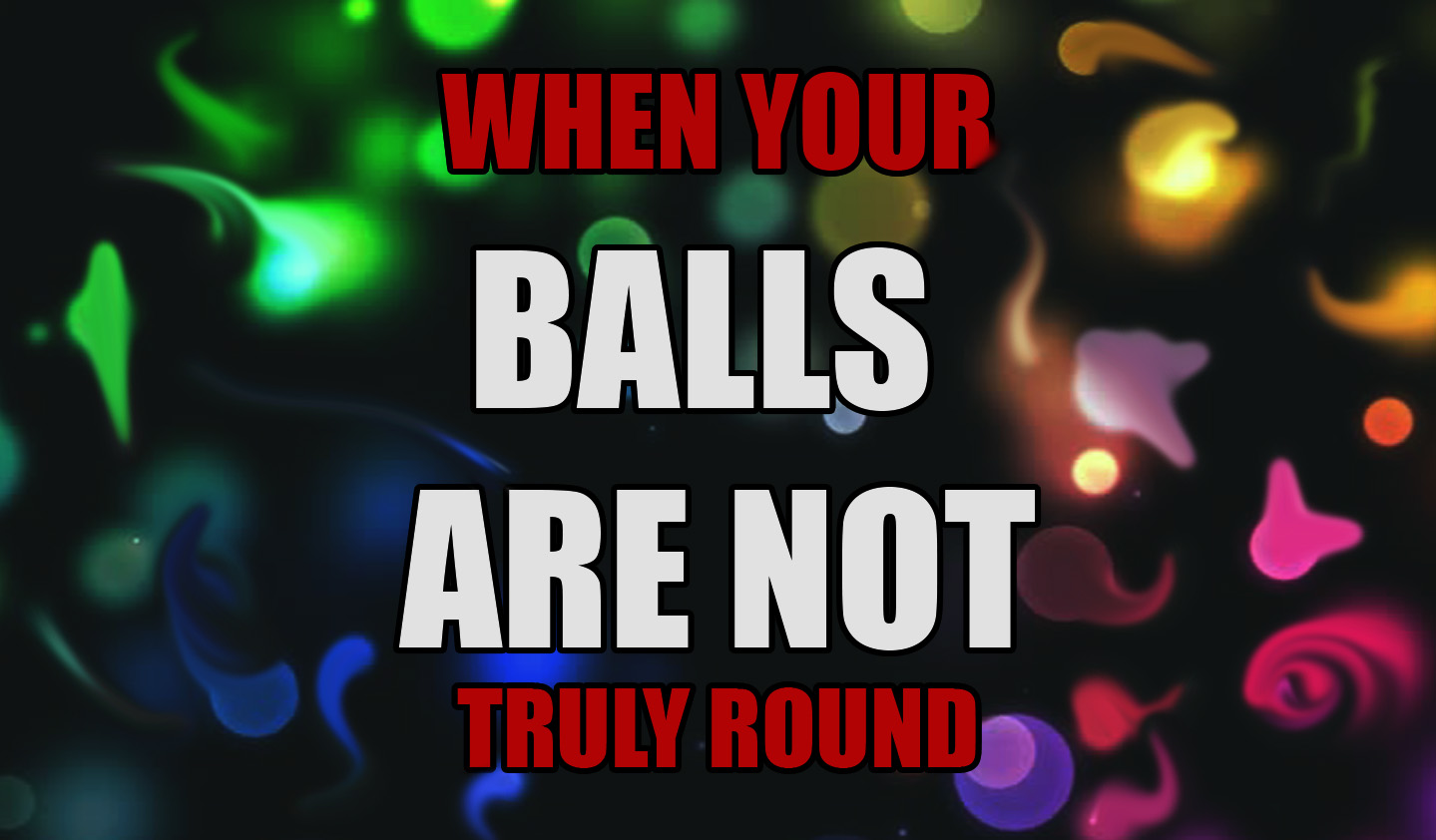
OPINION: When your balls are not truly round. There are no rules for “Bokeh”
By Steve Huff
The last line of this opinion piece will read: “So do not be afraid to be different. Embrace it. There is no right and no wrong for you, just what you like.”
Now on to my thoughts for the day….
Ever since I received the Hasselblad 90mm f/3.2 to test quickly on my Hasslebald X1D (I really rented it for three days to see if it was one I would like to eventually purchase for myself) from lensrentals.com I both fell in love with it and realized I probably will not buy it for myself, for two reasons. BTW, one of the reasons is NOT the Hexagonal bokeh, as I actually adore that aspect of the lens. Adore it?!? What are you, crazy Steve? Lol, no, not at all. Anyone who has read my articles and reviews for the past 10 years will know that I like lenses and cameras that are “Unique”. I like “different” and lenses that draw with a “Character” or have something about it that sets it apart from the norm. I like normal lenses as well but I am open to being different, that is part of what makes photography exciting to me. Just a part. For example…
I love the Canon Dream Lens, that 50 0.95 that has crazy wild Bokeh that many hate. While I love it, I see that lens as a limited use artists lens. Use it wisely, use it sparingly and it can set your work apart from others, quite easily. Use it too much though, and your images will start to look boring and stale to even you, eventually. You will tire of the look and get “Noctilux Syndrome”...lol. What is this you say? Well, what I call the “Noctilux Syndrome” is when you use a lens that has such a shallow DOF, much like a Leica Noctilux or Canon Dream Lens, and you love it so much you decided to use it all the time. Soon. you start to no longer see what is so special about these lenses. Soon, you start to crave another lens, with a more standard look. I have seen this happen to many photographers who sold 2-3 lenses to acquire a Noctilux, and use it as their only lens. EVEN ME! Yep, I did that long ago as the price of a Noctilux is not for the faint of heart.
But I know that not everyone enjoys “unique” or even “different”. Bokeh, is a personal choice, bottom line. What one finds offensive, someone else may find beauty in it. This is why we have so many lenses that create so many unique renderings. It’s all good, all of it.
The Hexagonal Bokeh, I love it here. Makes the image different from the same old same old. Does not take away a thing from the photo or emotion of the subject. If you think it does, you have been programmed to believe that by someone who made up the round bokeh rule ; ) X1D and 90 f/3.2 – Some have told me this image has a vintage vibe.
To me, these lenses are gorgeous, beautiful and have gobs of character, but if it is all you use, day in and out, every day, then you will tire of the look eventually. If you do not, then many who look at your photos eventually will. Some will see it as a “Gimmick” but in reality, it’s just overload. The looks these lenses create are so different and so unique they start to lose that uniqueness when you look at the shots each and every day.
But I am not here today to talk about the Noctilux or Dream Lens. Nope. Instead I want to chat about why many of us photo geeks think that the only good bokeh from a lens is when it produces round bokeh ball highlights. Truth be told, and I will say this now...I AM A PHOTO GEAR GEEK myself, so when you hear me speak of “Photo Geeks”, that is me, and some of you reading this. It basically means those who geek out on new gear, or specs or new technology in cameras. I am guilty 100% of doing this. But one thing I have NEVER been about is doing scientific testing of lenses or cameras, which is why this website was born 10 years ago! TO me, scientific tests really have nothing to do with real photography, never has and never will, for ME. Not a knock on those who enjoy that, but for me, it means nothing.
If some scientific tests shows a lens doesn’t resolve enough, that does not mean you can not shoot a masterpiece with the lens. I have always said that for me, the only way to test a camera is by using it, holding it, and shooting it. There is so much more to a camera than output and the fact is, I judge cameras I buy for myself much more on handling, simplicity, if it motivates and how I use it. Then I look at the IQ, as today, all cameras can deliver IQ that is fantastic. To me, having a camera that inspires me to use it is much more important that having 100 FPS or 100 MP.
A new type of bokeh classification…”the mess”..but I even adore this! Dare to be different is what I always say. It will get you farther than doing the same thing as everyone else. Leica M 240 and Dream Lens.
I’m no expert, let me lay that out there now…and that is because I feel there are no experts in all of this. Sure, there are technical experts who know their craft but I have always said with photography, it is never about rules, as rules were meant to be broken. Many gorgeous images shot over the years did not follow the rules of photography, and rules will never allow one to truly branch out these days anyway. Rules were made up by someone who felt their ideas were better than others, which when one follows strict rules in photography written by someone else, it means you will never be different or grow, it means you will be like everyone else who follows the same rules. So for me, I never follow any rules..I just shoot what I like, how I like and I know what I like and what kind of look and vibe I want. Nothing else matters for me, and what I shoot.
Typical round Bokeh Balls ; ) Lovely as well and shot on the A7RII by Sony. A WONDERFUL camera.
This finally leads me to the topic of this post…BOKEH BALLS, or lack thereof.
As you know, I recently acquired the Hasselblad X1D and love it to death. In fact it is now my favorite camera of all time as I stated in my last video HERE.
To me, it has everything I could ever ask for in a camera for WHAT I SHOOT, so no, I am not telling anyone to go run and buy it, as most would not be satisfied with this as an only camera. It will not do sports or action. But it delivers on all fronts for me from build, weather sealing, handling, simplicity, ease of use, joy of use, low light performance, EVF, and did I say handling? It is the best feeling camera I have ever held in my hand, like it was molded just for me. Such an amazing feel. Hasselblad nailed the ergonomics here. Wether I use it in Auto Focus or Manual Focus it has yet to let me down. No freeze ups, no battery issues, no EVF issues, no lag issues, no touch screen issues, no output issues. It amazes me that I can walk around with a camera just about the size of my A9 (slightly taller) that houses a 50MP Medium Format sensor. This allows me many benefits just with the sensor. Cropping power, more dynamic range than any 35mm camera mirrorless, fantastic true low light capabilities, and the unique focal lengths of the medium format system that are byte different from 35mm. When you open a RAW file, you are wowed as it is so different from the 35mm full frame files I have been so used to looking at. I still adore my A9, and it is going nowhere as it is fantastic and my fave 35mm format camera right now.
But just because I love it to pieces does not mean you will, which is why I do not say YOU NEED TO BUY THIS X1D! Nope, you make that decision by what you read from both those who like it and those who do not.
But the X1D…such a different experience from 35mm yet very familiar at the same time due to the new form factor. I won’t get into that as its in my 4 part review but let’s go back to the 90mm f/3.2 I rented. I wanted to give this lens a go after seeing some gorgeous work done with it online, with an X1D. At 90mm it gives about a 71mm FOV in 35mm terms. Also, about or close to an f/2 in 35mm for DOF. So something like a 70 f/2 or 2.2.
I have never been a 75mm guy, more like either a 50mm and 90 guy or a 35mm and 90 guy so I was not sure if I would truly fall for the 90. I can say one reason I would buy it though, and that is the unique BOKEH it produces. Yep, the hexagonal bokeh that some have said is a negative of the lens, well, I find it to be positive. My 45 does not have this style of bokeh (that I have seen yet in over 300 images) but this 90 does and I find it to be nice as it gives the lens something most other 90s do not…”character”. As I said above, I love “different” as it helps set you apart from others.
Just a personal snap of Debby and her Daughter, but see those hexagonal bokeh highlights? I do, yet it does not bother me one bit.
I can say that those who view your work, say if it was in a gallery, would never say “that shot sucks because of the hexagonal bokeh“…because an image should stand on its own, and there is no bokeh that will make or break and image unless your subject is the bokeh, lol. Create a nice image, with your subject clearly defined, with some emotion and it will stand on its own, as it should. Bokeh is something we have been trained and conditioned to believe can only be smooth or perfect with round highlights. That is nonsense in my mind, 100% and no offense here, if you believe that then you are more into the gear and tech specs than actual photography. Having hexagonal bokeh will not cause your image not to sell, or not to be in a gallery. In fact, I think the opposite. It may help as it will stand out and be different from what everyone else deems as perfect. Just like using those old lenses from Canon and Leica are different, this is what makes it a good thing in my book. But take that for what it is, my opinion. There is no perfect lens yet there are damn expensive ones that try to be.
This was a Petval lens which IMO is an EXTREMELY limited use lens. Like 2-3 images per year. When used in this way, limited, you will enjoy what it offers much more. Swirl city. The crazy bokeh here is not right or wrong, just different. Sony A7RII.
So do not be swayed by the “experts” who tell you what you should be doing and shouldn’t. The only thing you should and should not be doing with your photography is what comes from your heart, from within you, and no one else. Not me, no one! If you feel a lens or camera is nice and others trash it, so what! Go with what you like, no one else. Besides, those who just review cameras to trash them really are doing no one any favors as we all have different likes and dislikes. There is no one on earth who can tell you exactly what you will like. There is no substitute for trying a camera yourself before you buy. Rental, store, etc.
Reviews can help and point out the features and pros and cons but only you can decided if those pros and cons suit you or do not. I can say if you dislike Hexagonal Bokeh, and many do, then you will not like this 90! It has it ; ) NO way around it.
But my thoughts on what I do with a lens like the 90 f/3.2, I ay “so what if it has Hexagonal bokeh”, it makes it unique, different and breaks the so-called made up “rules” about what bokeh should be. I will consider buying this lens after more use, but if Hasselblad all of the sudden “fixed it” and created it with “round” bokeh highlights I would have 2nd thoughts as it would still be beautiful of course but it would lose what makes it unique, as it will be just like every other lens. In that case I would save some cash and buy the 100mm f/2.2 HC l lens used and plop it on my X1D via adapter. I gain speed and cream ; ) I know, I sound crazy but there is logic to what I say if you really think about it.
BTW, the image at the top of this page will be #2 of #15 in my year-long project to shoot local musicians (after I edit it and take out the really distracting part of the image, the two men in the background). At the end of one year, they will be displayed in a gallery setting. I would wager not one who looks at it will say “OH MY, that shot sucks due to the hexagonal bokeh”. Because the truth is no one else besides technical photo geeks care about that. Those who are not into photography do not even know what bokeh is, so they are not biased when it comes to this part of an image. They just enjoy the photography for what it is and an image can stand in its own, no matter what kind of bokeh is behind it, unless, as stated, you solely focus on the bokeh. Then and only then will it be a distraction, no matter the shape.
At the end of the day, I say be open to going “outside the norm” as this will help you stand out from others. That is a fact. So do not be afraid to be different. Embrace it. There is no right and no wrong for you, just what you like.
Steve

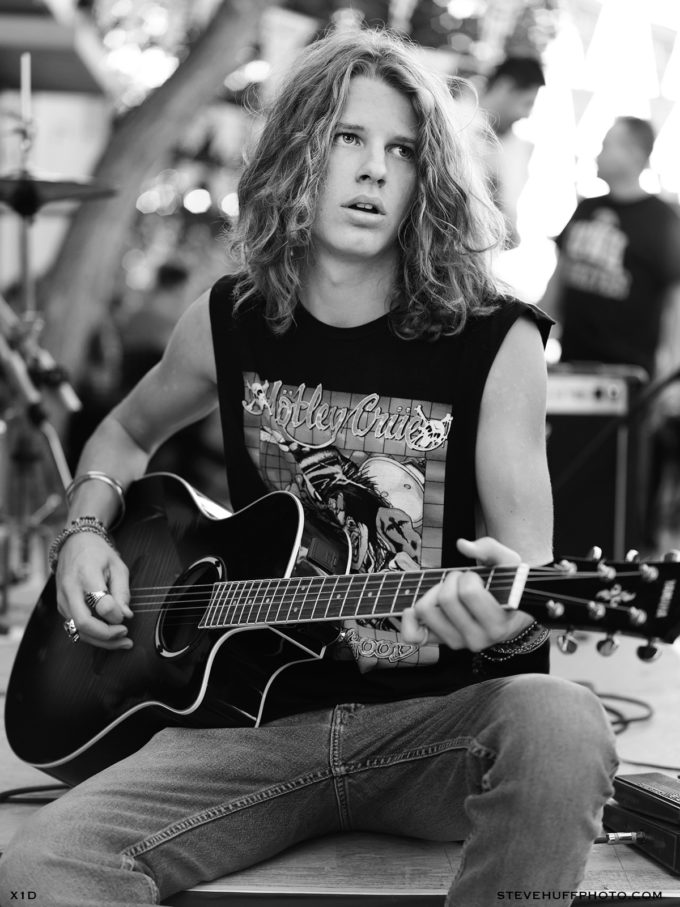
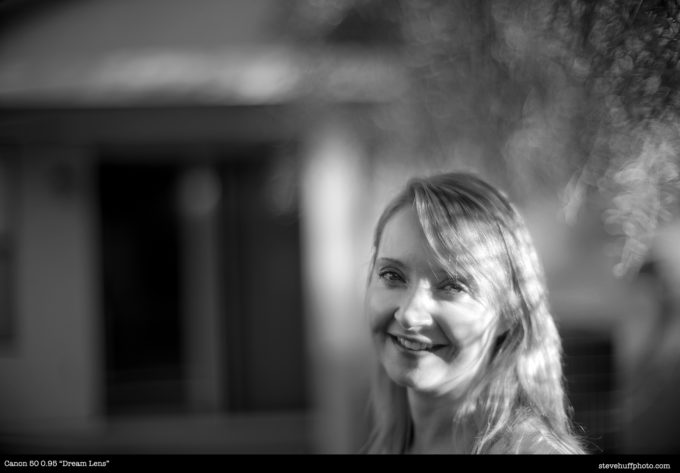
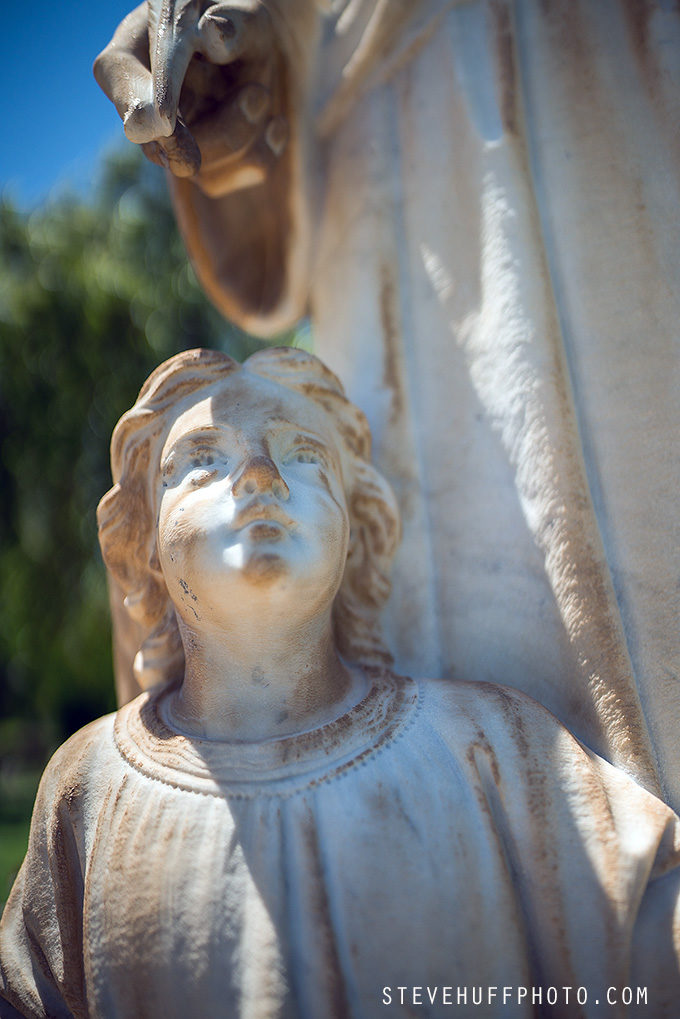
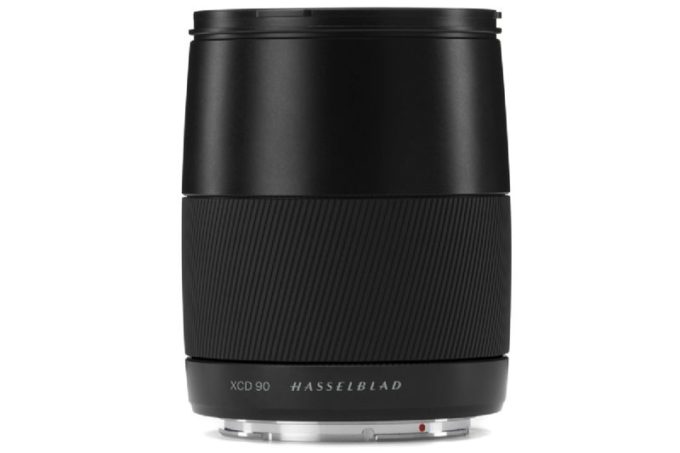
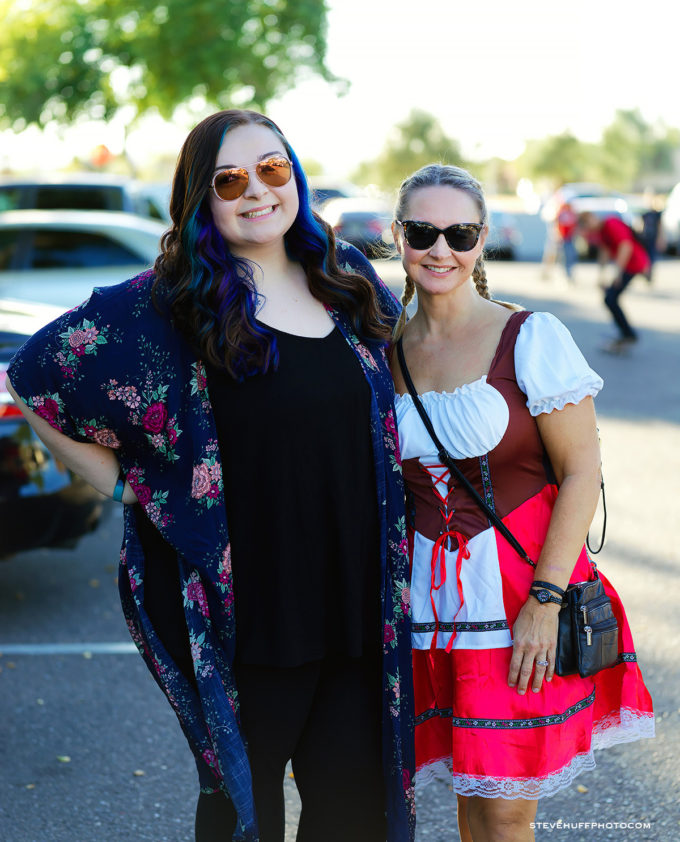
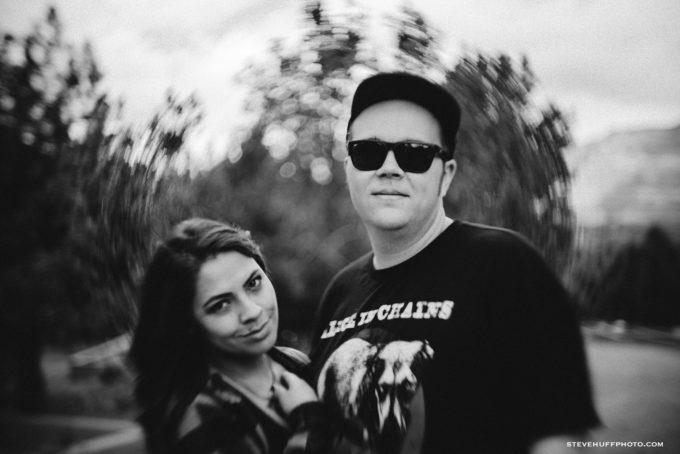


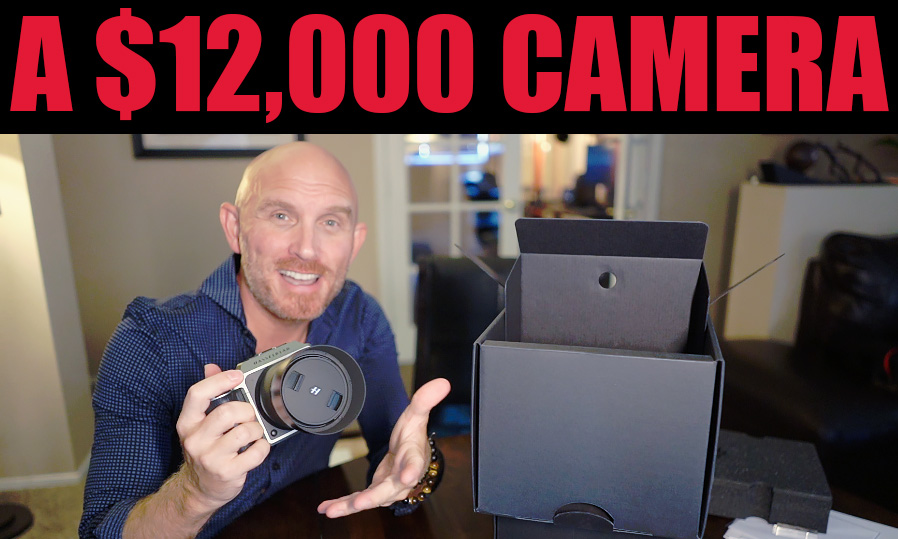
This article indirectly brings up one of my biggest concerns about many medium format digital cameras: they are a closed system. What I mean by that is that as of right now, if you delve into a system, you are tied to that manufacturer’s lenses (with the exception of the Leica S-system suing adapters.) This is something that mirrorless systems and rangefinders have overcome. I believe it is a great advantage that using an M-mount, you can buy lenses from several manufacturers, often at different price points.
In your A9 comparison, you use a Voigtlaender lens on the Sony camera, and with the Hasselblad, you are “stuck” with the Hasselblad lenses. I know that you like the look of these lenses, but I am personally hesitant to dive into any new system that forces me to invest in a whole new range of lenses.
Well, the voigtlander is a Sony E Mount, made for Sony. With the X1D, I can use a Zeiss Otus via adapter, or older Hasselblad lenses as well, like the 100mm f/2.2. These lenses are fantastic. I have no issues with using native glass with the X1D, as the glass is made for the system. But it will never be like a Sony where you can use almost any lens made, which is a strength of the Sony system IMO, a huge one. But the X1D is not made to be like a Sony, it’s a different feeling camera with a different vibe and using Hasselblad lenses is AOK with me. Look at Nikon and Canon, you are stuck with their lenses when using their DSLR’s. But I agree, the Sony rocks in the versatility camp above any other camera because it’s also full frame which means it will use all of the character of the lens you attach ; )
Steve, great piece and speaking of rules. I totally agree with you and here’s what some of the greats had to say about it.
“When subject matter is forced to fit into preconceived patterns, there can be no freshness of vision. Following rules of composition can only lead to a tedious repetition of pictorial cliches.” – Edward Weston
“There are no rules and regulations for perfect composition. If there were we would be able to put all the information into a computer and would come out with a masterpiece. We know that’s impossible. You have to compose by the seat of your pants.” – Arnold Newman
“There are no rules for good photographs, there are only good photographs.” – Ansel Adams
“And in not learning the rules, I was free. I always say, you’re either defined by the medium or you redefine the medium in terms of your needs.” – Duane Michals
“There are no shortcuts, no rules.” – Paul Strand
“Photography is not a sport. It has no rules. Everything must be dared and tried!” – Bill Brandt
“I came from the outside, the rules of photography didn’t interest me… “-William Klein
…… a photograph can look any way. Or, there’s no way a photograph has to look (beyond being an illusion of a literal description). Or, there are no external or abstract or preconceived rules of design that can apply to still photographs. ” Garry Winogrand
and maybe my favorite
“……so called “composition” becomes a personal thing, to be developed along with technique, as a personal way of seeing.” – Edward Weston
Bokeh is a bourgeois concept 😉
I have a lens that produces hexagonal bokeh, and for shots that include modern architecture, modern cars, etc, I love it. A camera is a mechanical/electronic/optical image producing machine, and in this instance, it produces something obviously more ‘mechanical’ looking.
For some subjects, that look, to me, is absolutely right.
You are on a roll at the moment, Steve! Your writing and observations are really mature.
I am amazed that people focus so hard on those gentle, hexagonal shapes and miss the absolute smoothness of the in-focus to out-of-focus transitions, which give images from that lens such a quality look. I’d go further and say that having those gentle hexagonals gives some structure to the background highlights, which is better to my eyes than big, gobby, round blobs or the “onion rings” you sometimes see in those situations. I agree that the 70mm efl focal length is a bit restricted but I also find 35mm efl a bit of an orphan. 24/28, 50ish and 90mm efl just work better!
May I ask what lens was used in the Cherub statue photo? That bokeh is gorgeous.
I know it was with the A7RII but the lens exif info is not there which leads me to believe it was a manual vintage lens, I will dig in and find out if I can, as it is in a review somewhere ; ) I agree, it is beautiful…soft, subdued and nice.
Zeiss Otus 28 1.4.
It’s featured in “The Zeiss Otus 28 1.4 Lens Review. Does it get any better in 28?” and “10 Reasons why the Sony A7RII has been my most used camera for almost two years. By Steve Huff”.
Could catch Dave. Steve: perhaps you will rent a Zeiss 28/50/85 in the near future. I would love to see (as I’m sure many would) an Otus on the X1D. Does the X1D have crop mode?
Forget I even asked, too much vignetting trying to adapt a Full Frame Zeiss Otus lens to MF. Bottom line, as good as the X1D is in certain areas, it will NEVER produce the results that you got from the A7RII combined with the Zeiss Otus 28MM f1.4 period. The Cherub photo is spectacular 😉
To my eyes, the hex bokeh in the Hassey 90 is distracting. It detracts from an otherwise stellar rendering.
Thanks for you thoughts. My point here though was to non photographers, to those who view images and art, to those who just appreciate a good image…. they do no not even notice it, and those are the ones we ultimately aim to shoot for if we want to show our work anywhere. I posted this image to a group of non photographers and they all LOVED it. Not one mentioned Bokeh, that is my point here. Things like this are only nitpicked by gear heads and those who read and watch too many experts who tell us what is right and what is wrong with photography, when they do not even know themselves as the fact is, there is no right or wrong, only personal pref. I have said this for years and there is no perfect lens with perfect bokeh, doesn’t exist and the reason is because we all have different tastes and likes. I even found a few who said the Leica 50 APO bokeh was bad as it was too clinical (when I feel it is smoothly beautiful) But I love it all… round, hexagonal, cats eye, and swirl. That’s just me. ; ) Thanks for reading and giving your opinion.
Even when you give something so many words it doesn’t necessarily improve or become more important. Too many words about that topic. The out of focus area of some lenses you just like and of others you don’t – and for other people it is different. The results should speak for themselves.
Exactly what I said in this article if you sum it up. Thanks for reading.
Thanks for that !!!
Never understood why people declare perfectly round bokeh circles as the aesthetic norm. I personally don’t like them that much and even less if the circles become oval-shaped.
The front and back bokeh (understood as out of focus rendering) of the 90mm Hasselblad is wonderful and I personally even like the photos where the hexagonal bokeh shapes appear.
I have the old 180mm f 2.8 Apo Leica R which draws strange hexagonal shapes, just delicious …
Best, straightforward, piece ever written.
Best, straightforward, I ever read!
BOKEH? what’s bokeh? it’s the mindset of the photographer!
Hi Steve, it is all personal of course. I love bokeh sonnar zm 50 produces, absolutely love it but couldn’t stand batis 85 bokeh so didn’t keep that lens. I don’t mind swirly bokeh as well. The hassy 90 bokeh with lights in background is too strong octagonal shape which I just don’t like. It is fine and I don’t really shoot that many pics at night with back lights bit having a lens which I don’t like a bokeh of is just a no for me 🙂
Exactly, we like what we like, and we dislike what we dislike. All personal pref!
Point taken, Steve – in fact lots of points taken! But for me the best bokeh is the one I don’t notice.
Many sentences, but bokeh is still bad.
In YOUR opinion. All personal preference. I think it is beautiful, opposite of bad. You think its bad. But either way, it is not bad or good, it is what it is.
Yes, you mentioned some other time the “cat eye” bokeh. Perhaps someone will make a lens with “Micky Mouse” bokeh. But I agree, the point is loving what you do. I don’t know why people mind so much about bokeh, it’s just a technical response of the lens characteristics, no one portraits bokeh, just it’s there: you can like or not the way the lens behaves.
Those hexagonal shapes look like something made by a Lomo Petzval drop in aperture plate. Which is cool when it is a ‘cheap’ Lomo lens.
But kills it for me with this high end gear as it is so distracting. In your crazy comparison shot with the beer cans, it almost makes it look like lens flare artifacts. Bummer after dropping that kind of coin.
Thanks for testing this for us and showing the effect. And saving me money!
All personal pref! I think its gorgeous and well worth the cost, though I won’t buy the lens as it’s not my focal length. But to each his own ; ) You own an X1D now? Did not know this.
“You own an X1D now? Did not know this.”
Nah, I was thinking about it but your review made up my mind. So my wallet thanks you!
😉
You know I’m a film shooter! Pretty much just use digi cams to scan my film nowadays (please test the D850’s film scan function if you can). Speaking of funky bokeh, I just used that Petzval bokeh control lens that you sold me on a Nikon FM2n for a project on human trafficking. Shots came out great.
Just use full aperture and you wont see any hexies. Otherwise they are visible with stopped down lens only when strong light patches are in background. You wont see it in landscape photography or in carefully chosen background. But of course round shapes are more neutral then any other. That`s why most of cine lenses have as many aperture blades as possible..